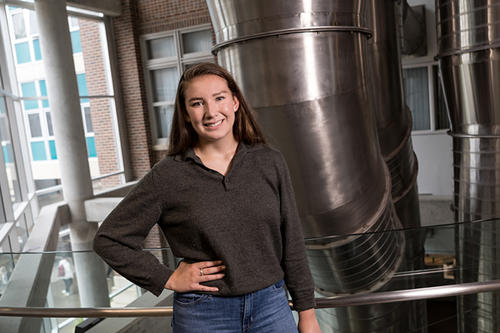
When she was just 14, Dannyelle Donahue decided to pursue a career as a medical device inventor.
The roots took hold earlier for Donahue, who’s always enjoyed building things, when her mother suggested she try an engineering camp at the University of Minnesota.
At the camp, graduate students showed her slices of rat brain and the brain stimulation research they were doing to combat the effects of Parkinson’s disease.
“It was really neat,” says Donahue, now a junior biomedical engineering major and research assistant at the U’s Visible Heart Laboratories. “I didn’t know this was a real thing—that you could invent medical devices.”
Medical technology on a shoestring budget
Now a member of the student group Engineering World Health, Donahue has opportunities to compete nationally at designing low-cost alternative medical devices. She and her fellow members have learned that with a little ingenuity, you can get a lot of mileage out of basic technology.
“We learn how to take things from here [the United States] and strip them down to their bare components, and make them functional for places that lack the modern resources we have,” she says. “In the future, I would really like to design a medical device that could be used in low-income countries to make health care more accessible.”
- Categories:
- Health




